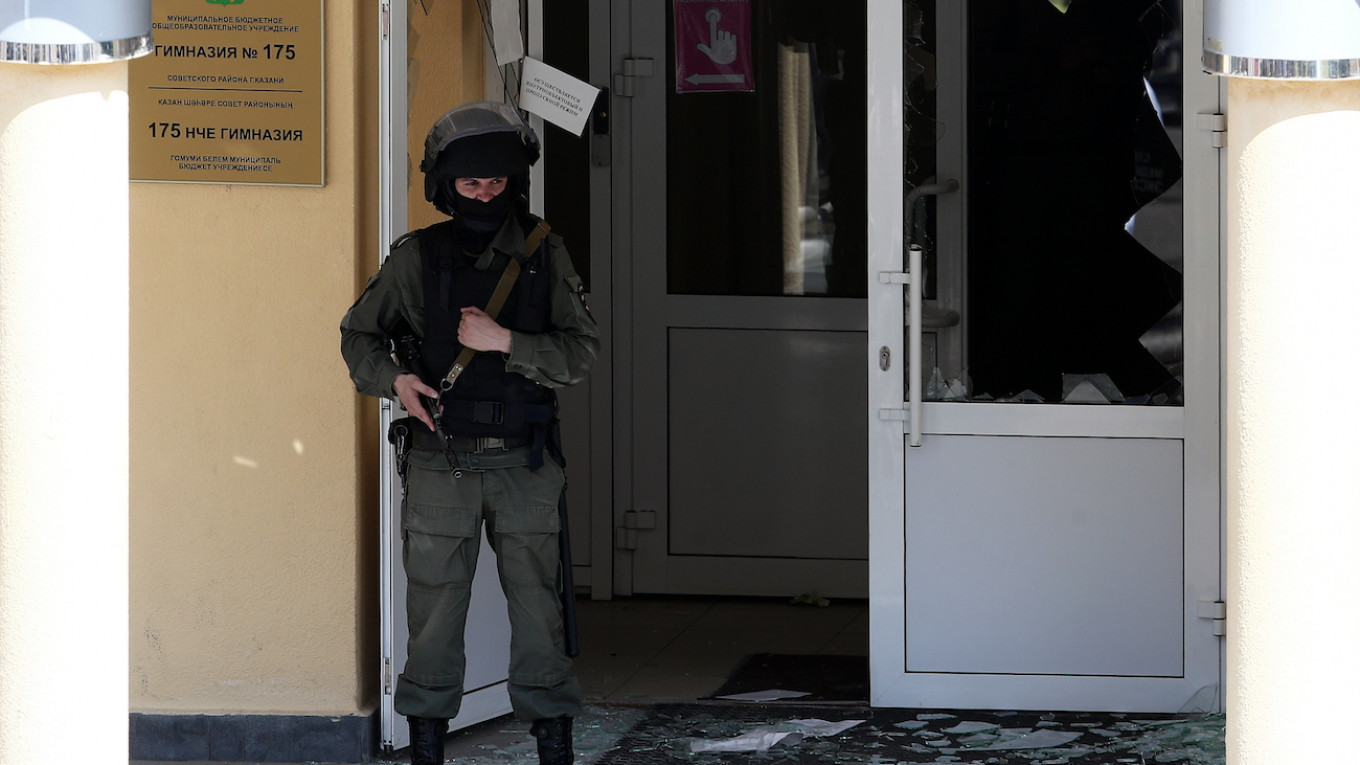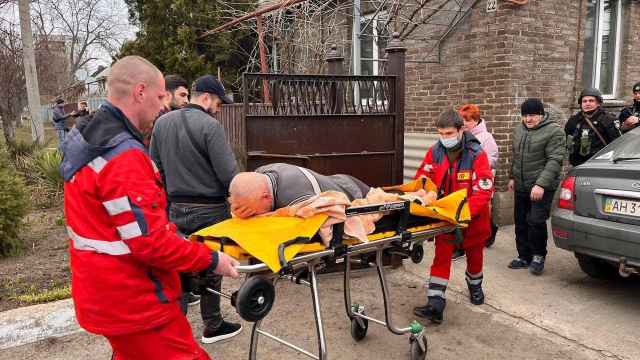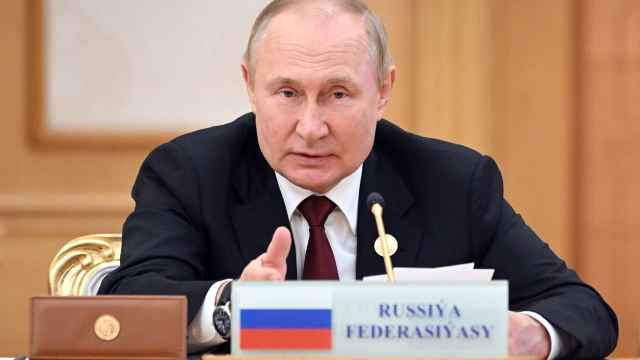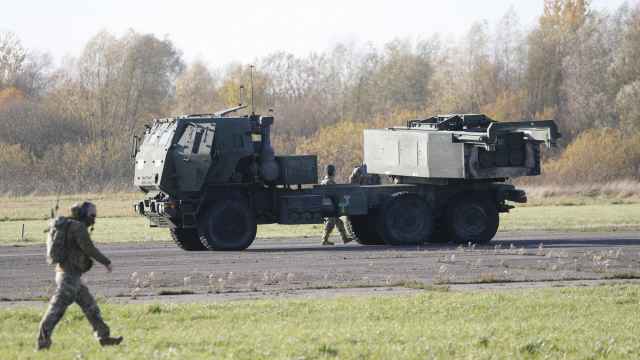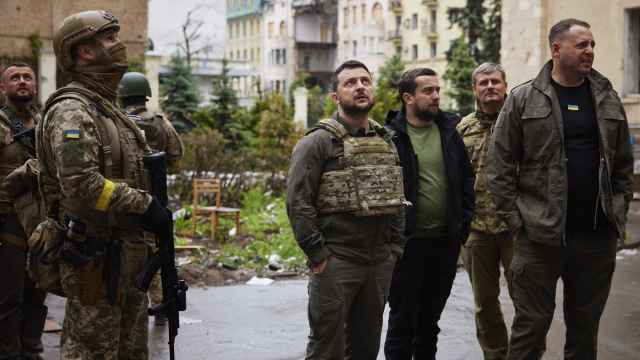Early in the morning of May 11, CCTV cameras in a quiet suburban district of the Russian city of Kazan picked up a skinny young man, dressed all in black, walking purposefully down a leafy street, shotgun in hand.
Unchallenged by passers-by, the gunman approached Gymnasium No. 175, a large public school of over a thousand pupils serving the western outskirts of the capital of Russia’s republic of Tatarstan. When asked for his credentials, he opened fire on a security guard, before storming inside.
By the time the shooter — 19-year-old former student of the school Ilnaz Galyaviev, who had been approved for a gun license less than a month beforehand — surrendered to police, seven eighth-grade students and two teachers lay dead, with a further 23 people wounded.
The massacre at Gymnasium No. 175, the 10th shooting at a Russian school in seven years, has shone a light on a rising crescendo of gun violence that has killed 36 and injured 124, leading to calls for a clampdown on gun ownership and tighter internet censorship, as the authorities struggle to get a handle on the problem.
“A few years ago, school shootings were basically unheard of in Russia,” said Denis Davydov, a Moscow-based social psychologist who has studied the rise of mass shootings in Russia.
“But in the last few years it’s become clear that we have an epidemic on our hands.”
Despite Russia’s relatively high crime rate, violence specifically targeted against schools and colleges first reared its head as recently as 2014.
On Feb. 3 that year, 15-year-old 10th-grade student Sergey Gordeev — a quiet, studious boy with an interest in esoteric philosophy and video games — arrived at school armed with his father’s carbine and took 21 of his classmates hostage.
He was apprehended after shooting dead a geography teacher and a police officer, diagnosed with paranoid schizophrenia and committed to a psychiatric hospital.
Further attacks followed similar patterns. In 2018, a Nazi-obsessed 14-year-old attacked his classmates with an axe in Siberia’s Ulan-Ude. The year before, a reclusive 15-year-old student had wounded four in an attack on his Moscow region school with a pistol, a meat cleaver and an improvised explosive device.
In October 2020, an 18-year-old student killed three people in the village of Bolsheorlovskoe near Nizhny Novgorod, having been openly preparing for a mass shooting for some years without intervention by the authorities.
For many Russians, the events bear comparison to the years-long trend of attacks on schools and universities in the United States.
The bloody incidents have even come to be known in Russian as “shutingi,” a Russified version of the English “shootings.”
Of particular influence for Russian shooters is 1999’s Columbine massacre — during which teenagers Eric Harris and Dylan Klebold killed 15 people in the U.S. state of Colorado in America’s first school shooting of the modern era.
With online subcultures dedicated to the massacre — members of which regularly praise its perpetrators — flourishing in certain corners of the internet, a string of Russian school attackers have claimed inspiration from Columbine.
Vladislav Roslyakov, an 18-year-old student who in 2018 murdered 21 people in a gun and bomb attack on Kerch Polytechnic College in Crimea — Russia’s deadliest school attack to date — was reportedly obsessed with the Columbine killers and seemed to re-enact aspects of the 1999 shooting during his own rampage.
According to the Proekt investigative website, state media were encouraged not to mention Columbine in the days after the Kerch attack, apparently for fear of inspiring copycats.
Even President Vladimir Putin himself seemed to obliquely acknowledge the American connection when he blamed “globalization” for the murders in Kerch.
For psychologist Davydov, the link to America — where mass shootings have become even more frequent in the years since Columbine — is a crucial reason for the explosion in mass killings in recent years.
“American school shootings are not the only reason we see similar things happening in Russia, but there is a link,” he said.
“American shooters set an example that Russian attackers are trying to mimic.”
Flurry of proposals
The school shootings epidemic has prompted a flurry of proposals from the Russian authorities.
In the aftermath of the Kazan attack, speaker of the State Duma Vyacheslav Volodin suggested requiring internet users to register passport details, thus ending online anonymity, ostensibly to prevent the spread of incitement to school attacks on social networks.
One Tatarstan official blamed the lack of teaching of a Soviet-style state ideology in schools for the upsurge in violence.
Elsewhere, Russia’s powerful Federal Security Service (FSB) has taken an aggressive approach to identifying would-be school attackers.
According to the independent Mediazona news website, in recent years the FSB has detained at least 18 teenagers suspected of planning school attacks, stretching from the Far Eastern island of Sakhalin to the southern city of Volgograd.
It’s a fightback against shooting that has led to increasingly invasive surveillance of teenagers deemed to be risks, with several cases reportedly fabricated, as otherwise innocent teenagers claim to have been lured into incriminating themselves as potential shooters by law enforcement.
The liberal Novaya Gazeta newspaper has published evidence that teenaged school students in the northern city of Murmansk are profiled as potential shooters based on traits including smoking, fighting, supporting jailed opposition figure Alexey Navalny and being “freedom loving.”
Spotlight on guns
In the aftermath of the Kazan shooting, however, the availability of guns in Russia is coming under the spotlight, with a new law tightening firearms rules and banning those with criminal records from possessing them set for approval by the State Duma.
Russia has stricter gun laws than the United States, with no constitutional right to bear arms and a complex process of arms purchasing, whereby aspiring gun owners must pass a psychological examination and complete a trial period of shotgun ownership before being allowed to acquire a rifle.
Even so, ownership of firearms is relatively high as the country is dominated by wilderness and hunting is a way of life for many.
According to a 2017 survey of international gun ownership, Russia ranks 68th of 230 jurisdictions for firearms per capita, with 12.3 guns per 100 people, around 10% of the U.S. figure, placing it ahead of much of Europe.
A 2015 study by the University of Alabama showed that gun violence rates worldwide are heavily correlated with the prevalence of firearms, with commonly blamed factors such as video games and mental health displaying no such connection.
Like the United States, Russia has an active pro-gun lobby, which has at times benefited from state patronage.
“It’s very important that Russia does not clamp down on guns in response to the events in Kazan,” said Vyacheslav Vaneev, head of Right to Bear Arms, a nationwide pro-gun group.
“We already have strict enough laws, and relatively few deaths.”
Instead, said Vaneev — whose organization was founded in 2011 by Maria Butina, a political activist jailed in the United States in 2019 for infiltrating the U.S. National Rifle Association — Russia must consider arming teachers and deploying the country’s National Guard on school premises to prevent future attacks.
But with deadly shootings an ever-more regular occurrence, there is a rising degree of support for some of the mooted restrictions on gun rights, especially for raising the legal age for arms purchases to 21, by which time most young men will have completed their obligatory year of military service.
“I am generally sceptical of extra restrictions as a way to prevent mass shootings,” said Davydov, the social psychologist.
“But we’ve got to a point now where we need to give it due consideration.”
“Mass shooters tend to be boys, between the ages of 15 and 19. It’s possible that raising the legal age for arms possession would filter out some potential shooters.”
Even so, experts remain sceptical that tightened restrictions on guns will solve the problem of school shootings in Russia.
For Davydov, the underlying causes that produce school shooters are more than gun availability, and range from bullying and abusive environments at school to inadequate welfare provision and income inequality.
Without action to resolve these deep-seated factors, Davydov is convinced that school shootings will remain part of the fabric of Russian life.
“It really pains me to say this,” he said, “but I am certain that these attacks will continue for the foreseeable future.”
A Message from The Moscow Times:
Dear readers,
We are facing unprecedented challenges. Russia's Prosecutor General's Office has designated The Moscow Times as an "undesirable" organization, criminalizing our work and putting our staff at risk of prosecution. This follows our earlier unjust labeling as a "foreign agent."
These actions are direct attempts to silence independent journalism in Russia. The authorities claim our work "discredits the decisions of the Russian leadership." We see things differently: we strive to provide accurate, unbiased reporting on Russia.
We, the journalists of The Moscow Times, refuse to be silenced. But to continue our work, we need your help.
Your support, no matter how small, makes a world of difference. If you can, please support us monthly starting from just $2. It's quick to set up, and every contribution makes a significant impact.
By supporting The Moscow Times, you're defending open, independent journalism in the face of repression. Thank you for standing with us.
Remind me later.



